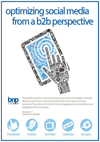How Social Media Can Increase Stress During a Mass Emergency

Exposure to high rates of conflicting information during an emergency is linked to increased levels of stress, says new research.
Southern California researchers, Roxane Cohen Silver, professor of psychology & social behavior and doctoral student Nickolas M. Jones, looked at the hours and days after a recent "active shooter event" on an unnamed college campus and measured social media communication and the stress levels of 4,000 students who dialed up Twitter during a two-hour lockdown at school. Their findings were published in the Proceedings of the National Academy of Sciences.
The study found that during crisis events, people often seek out event-related information to stay informed of what is happening. However, when information from official channels is lacking or disseminated irregularly, people may be at risk for exposure to rumors that fill the information void.
When danger is imminent and official information is disseminated inconsistently, public anxiety is elevated. In the past, people relied on radio and television broadcasts to reduce uncertainty. Today social media channels are frequently the source of updates, and users are exposed to a greater number of conflicting speculations and unverified reports. Moreover, this exposure is associated with greater distress. Jones' analysis of Twitter data showed that rumor generation and retweets were greatest during a 90-minute gap in communications from campus officials and were linked to heightened community-level negative emotion.
"In any uncertain and dangerous situation, it's important for officials to send frequent updates in real time and, when possible, include new details," Jones said. "Emergency management and public safety officers should monitor social media channels to mitigate rumors as they arise. We believe that studying the data generated during these events can provide insight into understanding how communities attempt to deal with crises, which can be used to help better prepare for future events."
Read more at: https://phys.org/news/2017-10-crisis-exposure-conflicting-stress-linked.html#jCpTheir findings were published in the Proceedings of the National Academy of Sciences.
http://www.pnas.org/content/early/2017/10/18/1708518114.abstract
Looking for a reprint of this article?
From high-res PDFs to custom plaques, order your copy today!








